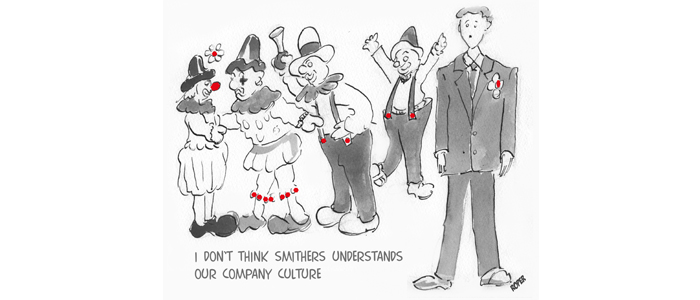It often helps in leading your organisation to think of a three-legged stool: strategy, performance and culture. We use this analogy in working with business leaders who wonder, for example, why business is going like a train, they know where they are going and are hitting all their KPIs, but somehow there’s a niggling doubt that everything is not as it should be.
This often shows up in little things like complaining from employees, finger pointing between departments, and skin-of-the-teeth hitting of targets. All a sign that the strategy and performance legs of the stool are solid, but the culture part is lagging behind. It’s highly probable that these businesses have leaders who are solidly on the front foot with their strategy and performance, but tend to leave managing their culture until something goes so badly wrong they can’t ignore it any more.
Here are some indications that your organisation needs to invest in culture:
- Time and money are wasted on starting too much and failing to complete successfully or make 100% use of these initiatives
- People leave because they see it as a frustrating place to work
- First choice candidates decline to join you too often
- Your customers say there are people in your market similar, cheaper or offering better value than you
- Customers rate you highly in feedback, then leave you anyway
- The competition seem faster, more innovative and leaner than you
How to get onto the front foot and stabilise the ‘stool’:
- Think really carefully about what you want to happen – as carefully as you think about your strategy, plans and targets. Too often business leaders prioritise these over the third leg of the stool. You may need help articulating this. Many leaders know in their gut when something is right – or wrong – but they don’t know how to put into words what ‘great’ looks like. Get help.
- Set target behaviours and scenarios. For example:
- People always demonstrate our stated company values
- Everybody loves coming to work
- Everyone works to support the success of everyone else
- We always deliver on customers’ known needs
- People never make excuses for underperformance
- People want to come and work, and stay, with us
- We set and maintain the standard for delivery of (our service)
- Then explore where you give mixed messages. For example:
- if what you want to happen is ‘Everyone works to support the success of everyone else’, ask how people feel about your appraisal process. Mostly, where leaders haven’t thought about it, they’ve installed (or allowed to continue) a backward-looking, top-down, one-way ‘review’ process, which leaves people feeling bored and going through the motions at best, and threatened and judged at worst. They don’t feel supported and empowered by management; they feel as if they’re back at school waiting for their report.
- if you want people always to demonstrate your stated company values (you do have these, don’t you?), check your own behaviour. Is there one rule for you and other senior managers, and one for everyone else? Nothing destroys trust faster than everybody knowing that senior management pay lip service to the company values.
- if you want to set and maintain the standard for delivery of (your service) and be recognised for it, how often do you say one thing and do another? You say quality is paramount, then cut costs where you think it won’t be noticed. You get back to customers within minutes but keep each other waiting in-house for hours or days for an answer. You say customer service is all-important then reward people only against the financial targets they hit.
- Take your initial statement of how you’d like your company culture to appear. Now, do a rigorous audit of all your company practices, explicit and unstated, and challenge everywhere you see a mismatch.
Great leaders use their vision for how they want their organisation to be as a touchstone for everything they do. It’s not something to be framed and hung in the boardroom, it’s a management tool and should be used, reviewed and updated as regularly as all your other management tools. That’s how you get the three-legged stool rock-steady. It’s how you create a great team, engage people so they pour their enthusiasm and skills into making the operation a success and build an organisation that is as successful as the business it supports.
